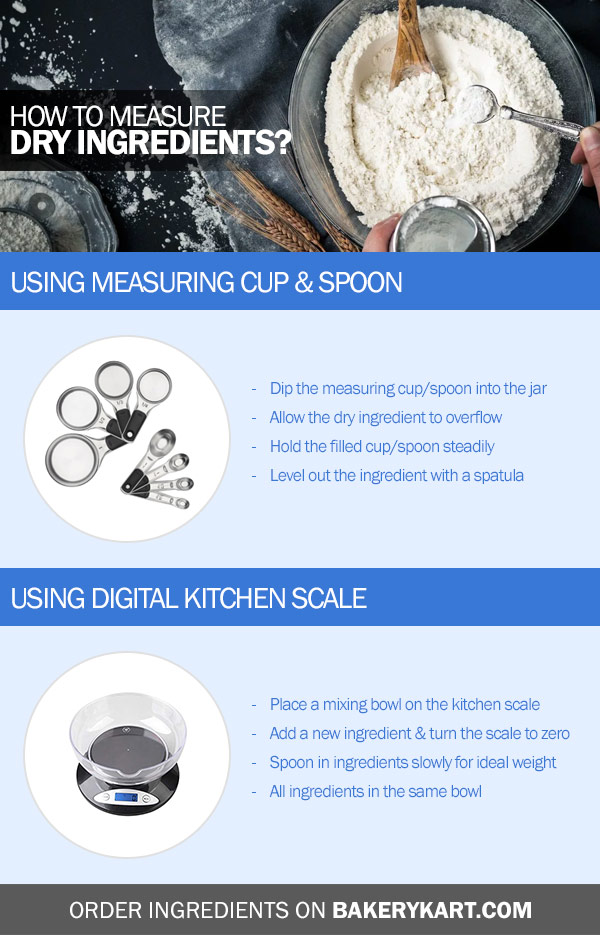In this article, we’ll show you the essential steps to properly measuring ingredients for baking. We’ll guide you through the process, whether you’re an experienced baker or just starting out. It’s crucial to measure accurately to achieve the perfect texture and taste in your baked goods. From measuring dry ingredients like flour and sugar to liquid ingredients like milk and oil, we’ve got you covered. So grab your apron and let’s get measuring!
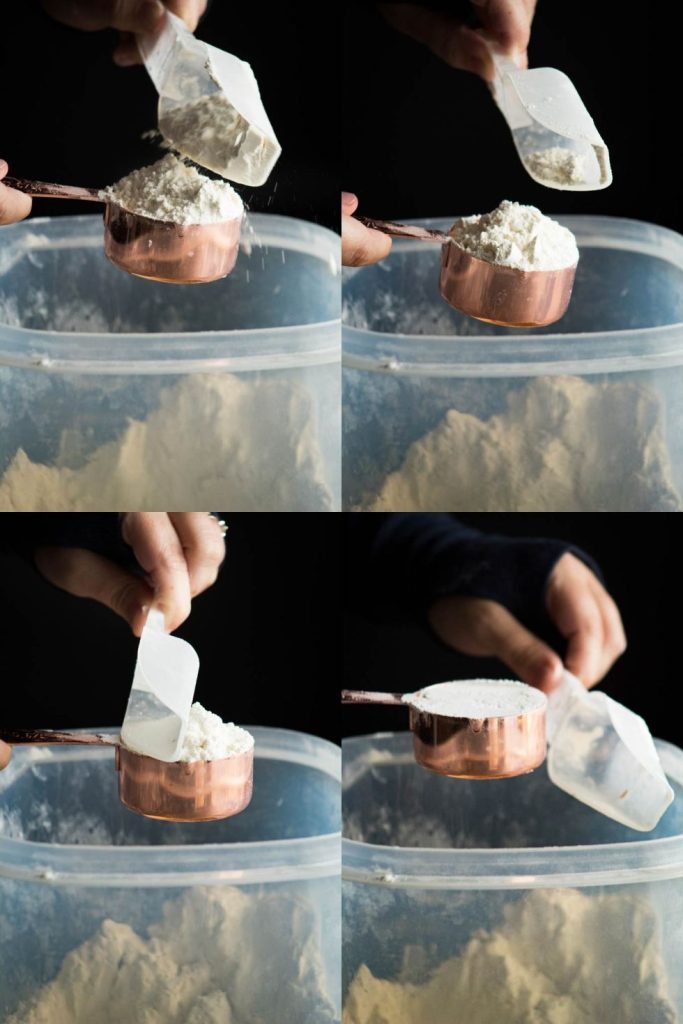
The Importance of Properly Measuring Ingredients
When it comes to baking, one of the key factors that can make or break your recipe is the accurate measurement of ingredients. It may seem like a small detail, but it can greatly affect the outcome of your baked goods. From ensuring consistent results to avoiding baking mishaps, properly measuring ingredients is essential for achieving the perfect balance of flavour and texture.
Accurate Measurements for Consistent Results
If you’ve ever followed a baking recipe and ended up with a disappointing result, it could be due to inaccurate measurements. Baking is a science, and precise measurements are crucial for ensuring consistent results. Using too much or too little of an ingredient can result in a cake that doesn’t rise, cookies that spread too much, or bread that is too dense. By properly measuring your ingredients, you can achieve the same delicious outcome every time you bake.
Avoiding Baking Mishaps
Nobody wants to spend time and effort on a recipe only for it to fail miserably. Inaccurate measurements can lead to baking mishaps, such as sunken cakes, burnt cookies, or dry muffins. By measuring your ingredients correctly, you can avoid these frustrating and disappointing outcomes. Taking the time to measure your ingredients accurately will give you more control over the baking process and increase your chances of baking success.
Balancing Flavour and Texture
In baking, achieving the perfect balance of flavour and texture is key. Each ingredient plays a crucial role in determining the final outcome of your baked goods. By measuring your ingredients properly, you can ensure that you are using the right amount of each component, resulting in a harmonious combination of flavours and a desirable texture. Whether it’s a moist and tender cake or a perfectly chewy cookie, accurate measurements are essential for achieving the desired taste and texture.
Measuring Dry Ingredients
When it comes to measuring dry ingredients, such as flour, sugar, or cocoa powder, there are a few different methods you can use to ensure accuracy.
Using the Scoop and Level Method
The most common method for measuring dry ingredients is the scoop and level method. In this method, you simply scoop the ingredient with a dry measuring cup and level off the excess with a straight edge, such as the back of a knife or a spatula. This ensures that you are using the intended amount of the ingredient without packing it too tightly or leaving it too loose. It is important to note that when using the scoop and level method, you should never shake or tap the measuring cup, as this can cause the ingredient to settle and lead to inaccurate measurements.
Weighing with a Digital Scale
For those who want the utmost precision in their measurements, using a digital scale is the way to go. Weighing dry ingredients provides the most accurate and consistent results, as different brands of ingredients can have varying densities. By measuring by weight, you can ensure that you are using the exact amount required by the recipe. Simply place your bowl or container on the scale, zero it out, then add the desired weight of the ingredient. This method is particularly useful for professional bakers or those who are more serious about their baking adventures.
Measuring Liquid Ingredients
Measuring liquid ingredients requires a slightly different approach compared to measuring dry ingredients. It is important to use liquid measuring cups and take into consideration the volume and weight measurements.
Using Liquid Measuring Cups
Liquid measuring cups are designed specifically for measuring liquids. They usually have a spout and are transparent, making it easy to accurately measure the desired amount of liquid. To use a liquid measuring cup, place it on a flat surface and pour the liquid until it reaches the desired marking on the cup. Be sure to bend down to eye level to get an accurate measurement. It is important not to lift the cup or tilt it to get a better look, as this can affect the accuracy of the measurement.
Measuring by Weight
Similar to dry ingredients, measuring liquid ingredients by weight provides a more precise measurement. Using a digital scale, you can accurately measure the weight of a liquid ingredient, such as milk or oil. Make sure to use a bowl or container that is compatible with the scale and zero it out before adding the liquid. This method is especially useful for recipes that require a specific ratio of liquid to other ingredients, ensuring balanced flavours and textures.
Measuring Ingredients by Volume vs Weight
When it comes to measuring ingredients, the debate between volume and weight measurements is a common one. Understanding the difference between the two and the benefits of using weight measurements can greatly improve your baking results.
Understanding the Difference
Volume measurements refer to using cups, tablespoons, or teaspoons to measure ingredients, while weight measurements involve measuring the mass of an ingredient using a scale. Volume measurements are more common in home baking, as most recipes provide measurements in cups and teaspoons. However, weight measurements are considered more accurate and reliable, as ingredients can have different densities. Using weight measurements ensures consistency in your baking and allows for more precise adjustments when needed.
Benefits of Using Weight Measurements
There are several benefits to using weight measurements when baking. Firstly, it eliminates the need for conversions. Different ingredients have different weights, so using weight measurements removes any confusion or need for conversion when a recipe provides measurements in volume. Additionally, weight measurements are more consistent, as factors such as the density of certain ingredients or how they are packed can affect volume measurements. Lastly, using weight measurements allows for easier scaling of recipes. If you want to double or halve a recipe, weight measurements can be easily adjusted, ensuring accurate and consistent results.
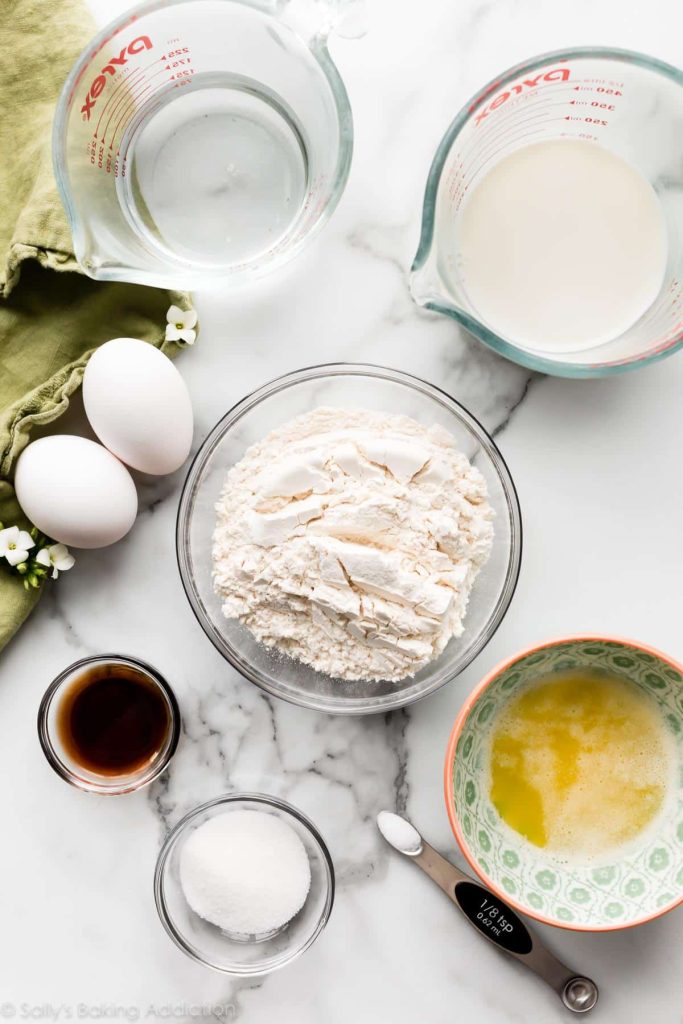
Substitutions and Conversion Tips
In baking, there may be times when you need to make ingredient substitutions or convert between volume and weight measurements. Here are some tips to help you navigate such situations.
Converting Volume to Weight
If a recipe calls for ingredients in volume measurements, but you prefer to use weight measurements, you can easily convert between the two. Most ingredients have a standard weight-to-volume ratio. For example, one cup of all-purpose flour weighs approximately 120 grams. By knowing these ratios, you can convert the volume measurements to weight measurements and achieve more accurate results in your baking. There are various charts and conversion tools available online that can help you with these conversions.
Ingredient Substitutions for Different Results
Sometimes, you may not have a specific ingredient on hand or want to experiment with different flavours in your baking. Knowing suitable ingredient substitutions can help you achieve the desired results. For example, if a recipe calls for buttermilk but you don’t have any, you can easily make a substitute by adding a tablespoon of lemon juice or vinegar to a cup of milk. This creates a similar acidic environment and tangy flavour. Experimenting with ingredient substitutions can lead to exciting variations in your baked goods and expand your baking repertoire.
Tips for Precise Measuring
To ensure the most accurate measurements for your ingredients, there are a few tips and techniques you can follow.
Using the Correct Measuring Tools
Investing in quality measuring tools is essential for precise measurements. Avoid using random cups or spoons from your kitchen drawer, as they may not provide accurate measurements. Use standard measuring cups and spoons that are specifically designed for baking. Additionally, make sure your measuring tools are clean and in good condition, as any residue or damage can affect the accuracy of your measurements.
Properly Fluffing and Stirring Dry Ingredients
When measuring dry ingredients, such as flour or cocoa powder, it is important to fluff them up first. This can be done by gently stirring the ingredient with a spoon or a whisk to break up any clumps or compacted areas. Fluffing the ingredient ensures an even distribution of air and avoids dense or clumpy measurements. After fluffing, use the scoop and level method to measure the desired amount accurately.
Leveling Measurements with a Straight Edge
Once you have scooped the ingredient into your measuring cup, be sure to level off the excess with a straight edge. This can be done using the back of a knife, a spatula, or even your finger. By leveling off the ingredient, you remove any excess and ensure a precise measurement. Avoid adding or removing any additional ingredient after leveling to maintain accuracy.
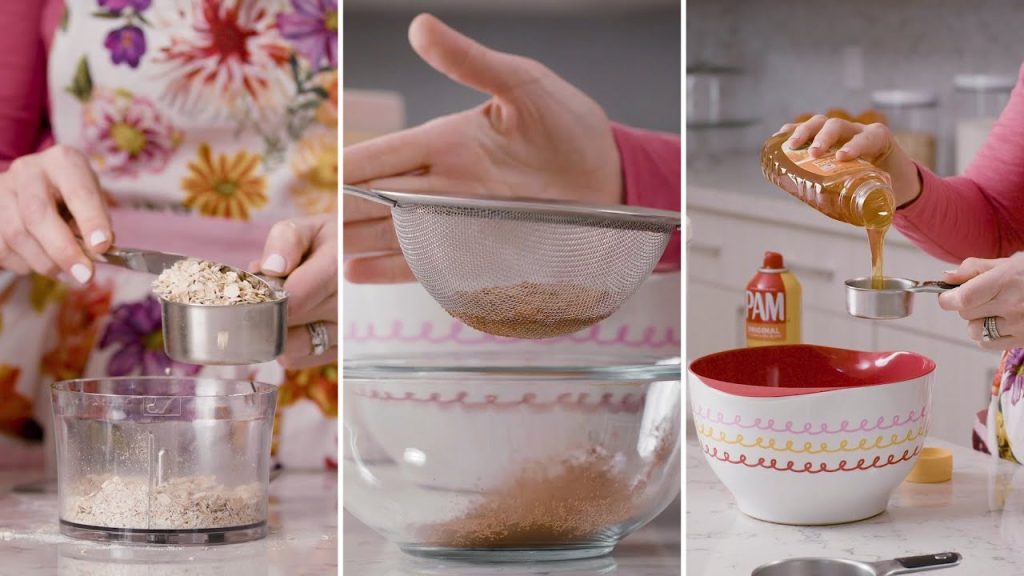
Common Mistakes to Avoid
While there are several tips and techniques for accurate measurements, there are also some common mistakes that should be avoided at all costs.
Never Pack Flour
When measuring flour, it is important to resist the temptation to pack it into the measuring cup. Packing flour can result in a significantly higher measurement, leading to dense and dry baked goods. Instead, use the scoop and level method, gently filling the measuring cup without compacting the flour. This will ensure a more accurate and consistent result in your baking.
Avoid Over-Packing Brown Sugar
Brown sugar has a tendency to clump and pack together. When measuring brown sugar, resist the urge to press it into the measuring cup. Instead, scoop it into the cup and level off the excess. This will prevent the sugar from being overly compacted and ensure a proper measurement. Over-packed brown sugar can result in overly sweet or dense baked goods.
Measuring Sticky and Dense Ingredients
Some ingredients, such as honey or molasses, can be sticky and challenging to measure accurately. To measure sticky ingredients, lightly coat your measuring spoon or cup with cooking spray or a small amount of neutral oil. This will allow the ingredient to slide off more easily and provide a more accurate measurement. For dense ingredients like peanut butter, it is best to use a flexible measuring cup, which can be squeezed to release the ingredient more easily.
Handling and Storing Ingredients
In addition to accurately measuring your ingredients, proper handling and storage are equally important to maintain their quality and freshness.
Properly Sifting Flour
Sifting flour not only helps remove any lumps or debris but also aerates it, resulting in lighter and fluffier baked goods. To sift flour, use a fine-mesh sieve or a flour sifter and gently shake it over a bowl. This will break up any clumps and ensure a smooth and consistent texture. Sifted flour also helps in achieving more accurate measurements, as it is less likely to be densely packed.
Best Practices for Storing Ingredients
To ensure the longevity and freshness of your ingredients, proper storage is crucial. Dry ingredients, such as flour and sugar, should be stored in airtight containers in a cool, dry place away from direct sunlight. This helps prevent any moisture or pests from affecting the quality of the ingredients. Liquid ingredients, on the other hand, should be stored in the refrigerator according to their specific requirements. By properly storing your ingredients, you can maintain their quality and achieve consistent results in your baking.
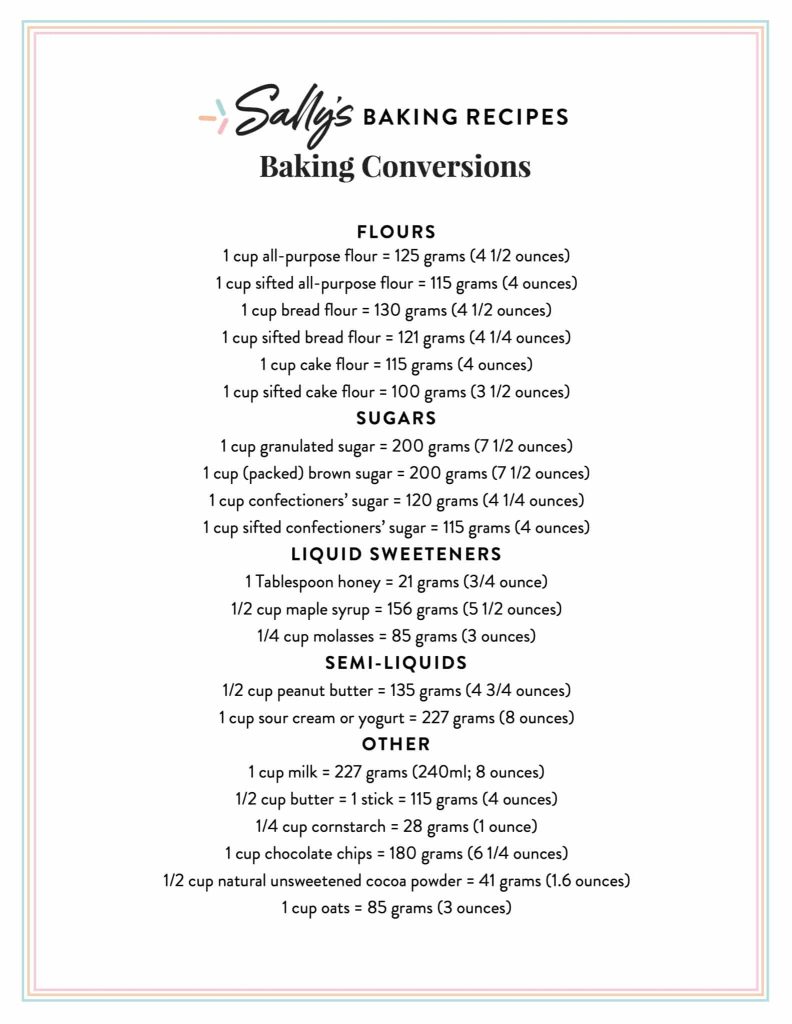
Understanding the Impact of Ingredient Ratios
Baking is not only about measuring individual ingredients accurately but also understanding the impact of their ratios on the final outcome. The balance and interaction between ingredients play a crucial role in achieving the desired flavours and textures.
The Role of Chemical Reactions
When ingredients come together in a recipe, they undergo various chemical reactions that contribute to the baked goods’ overall structure, flavour, and texture. The interaction between acids and bases, such as buttermilk and baking soda, creates carbon dioxide gas, resulting in the rise of cakes or muffins. Similarly, the balance between fats, such as butter, and sugars contributes to the tenderness and moisture of baked goods. By understanding these chemical reactions, you can make informed decisions when adjusting ingredient ratios or trying out new recipes.
Adjusting Ingredient Ratios for Specific Results
Understanding the impact of ingredient ratios allows you to customize recipes and achieve specific results. For example, if you prefer a more tender and moist cake, you can increase the amount of fat or sugar in the recipe. On the other hand, if you want a denser texture, you can decrease the leavening agents, such as baking powder or baking soda. By adjusting ingredient ratios, you can tailor recipes to your taste preferences and create unique variations of your favourite baked goods.
Practice Makes Perfect
While understanding the importance of proper measuring techniques is essential, nothing beats practice and experience when it comes to baking.
Experimenting and Learning from Mistakes
Don’t be afraid to experiment and try new things in your baking. Baking is an art, and it takes time to find what works best for you. If a recipe doesn’t turn out quite right the first time, don’t get discouraged. Use it as an opportunity to learn from your mistakes and make adjustments for future attempts. With each baking adventure, you will develop a better sense of measurement and gain confidence in your abilities.
Developing a Sense of Measurement
As you gain experience in baking, you will naturally develop a sense of measurement. You will learn to recognize the right consistency of dough or batter by sight and touch. These instincts will guide you when making adjustments or even creating your own recipes. Don’t be afraid to trust your intuition and rely on your developing sense of measurement. It is this creativity and personal touch that makes baking truly enjoyable and rewarding.
In conclusion, properly measuring ingredients is an essential aspect of successful baking. Accurate measurements ensure consistent results, avoid baking mishaps, and help achieve the perfect balance of flavour and texture. Whether it’s using the scoop and level method for dry ingredients, measuring by weight for liquids, or understanding the difference between volume and weight measurements, precision is key. By following tips for precise measuring, avoiding common mistakes, and properly handling and storing ingredients, you can elevate your baking to new heights. With practice, experimentation, and a developing sense of measurement, you will become a confident and skilled baker ready to create a wide variety of delicious treats. So, grab your measuring cups, scales, and spatulas, and let the baking adventures begin!
